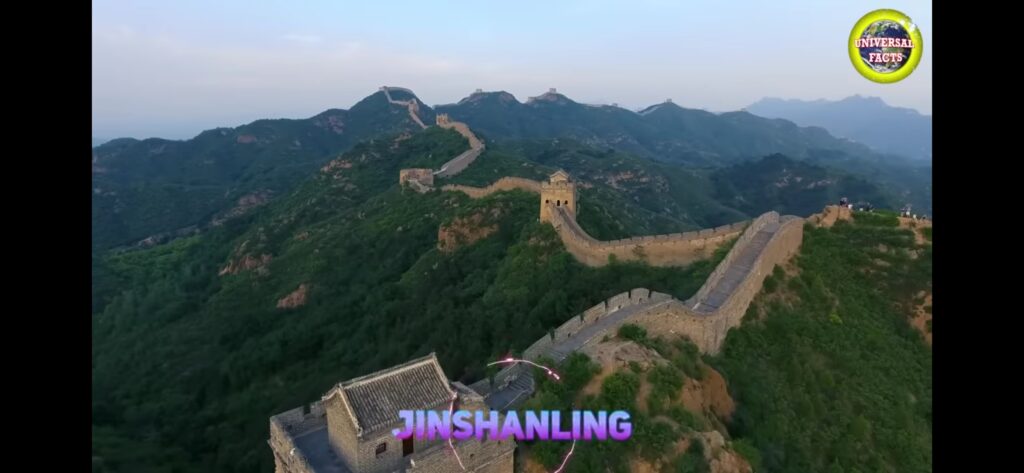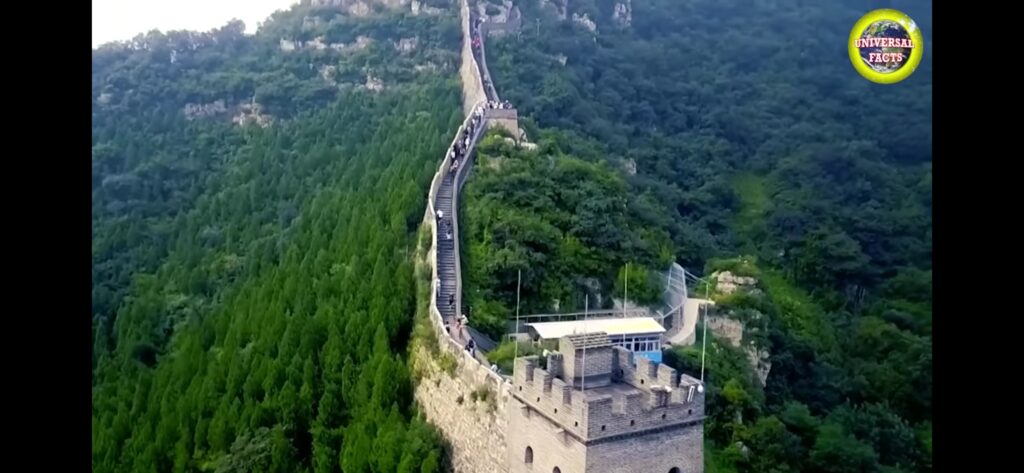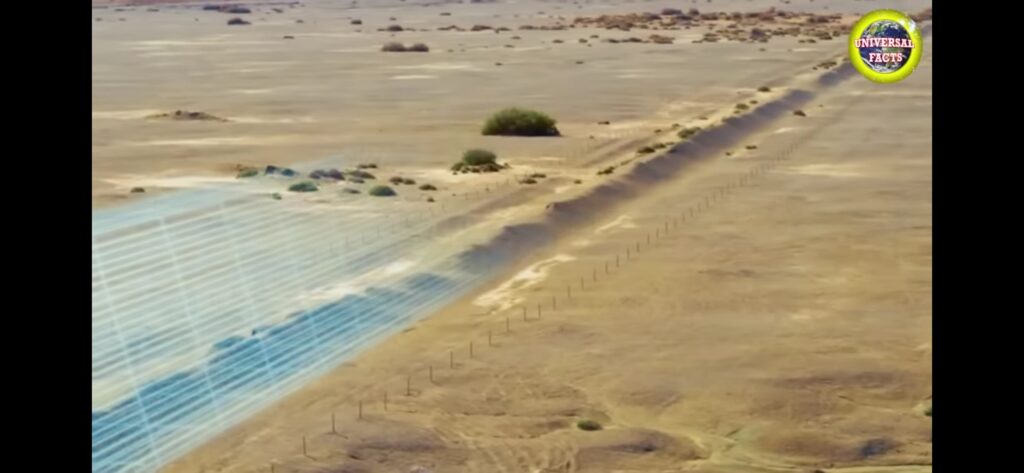The Great Wall of China When, Why, How?
Description
Welcome to hamaridunia.com!
Speaking of amazing wonders created by means of human skill around the world, there are thousands of examples where human industry has transformed something into a lasting historical legacy.
Some of these wonders are the result of the creativity of master architects, built over decades of labor by millions of people. But, dear friends, do you know about such a wonder, which is known as the largest manmade structure in human history so far? And it took not just decades but centuries to build? We are talking about the Great Wall of China.

The Great Wall, which passes through ninety Chinese states, was built by six national dynasties, with the help of 800,000 workers over a period of 2,000 years. When was the Great Wall of China built? In ancient times, China was divided into many smaller states.
Each state built huge walls to protect its city. From about 221 BC to 206 BC, the Qanat dynasty was established in China. During his rule, all the sprawling kingdoms were united into one large empire. During his rule, the ruler Chen Shihuang initiated a plan to build a Great Wall to border China.

Initially, the siege of Chen, Nao and Yan was planned to build a great wall, which was about 5000 km long. Its strength and size increased under successive rulers. But the major part of the wall was built in the 14th to 17th centuries of Ming rule was According to estimates, the Ming rulers built an 8,800 km long wall.
Thus the total duration of construction of the Great Wall was 2000 years. Initially, its length was estimated to be 5500 km or 6200 km. Because it is not just one wall, but a collection of walls, a 2012 impact survey found that its total length is 13,171 miles or 21,196 kilometers.
The construction of the Great Wall of China
What was the reason for the construction of the Great Wall of China? Located on the northern edge of China, Mongolia is the land of the Mughals. In ancient times, Mongol raiders were often the perpetrators of raids on China and its surrounding areas. In 1234, Chen Shi Khan’s Faujdar Drao Jin forces defeated Jin rule and ushered in the Mughal Empire of China.

They destroyed the Great Wall in the north and entered China. No later than the 14th century, the Gobi Desert nomads had never established an empire over such a vast area of land. Finally, they were expelled by the Ming government of China in 1368 and the northern wall was again fortified. In 1420, construction of the Great Wall of China resumed during the rule of the Ming Dynasty. During this time, military forts, routes and watchtowers for guards were also added to the wall so that the enemy could not be seen.
Visit another post on my website for any tour……..
According to experts, about 25,000 watchtowers were built; which from each other were not equal. In some places the distance between the two watchtowers was very short, while in some other places it was more than 3 miles. Above the watch tower of these three floors there were also rooms in which the view of the enemy was kept.
These watch towers were also used to communicate signals to each other. If a place was attacked by the enemy, a smoke signal was used to send a warning to the other towers. According to one study, the signals could be sent over a distance of at least 620 miles. About 800 thousand people had to work for its construction.

And among them were 300 thousand soldiers and 500 thousand common people. The materials used in this architectural marvel include sand, kiln, limestone, wood and stone. However, in some places steaks were also used in combination with it. According to another estimate, about 3.87 billion were used to make bricks.
It is important to mention that the well-barrow was also invented during this period. It was first used in the construction of the Great Wall. The Great Wall may weigh about 58 million tons. In some places the height of the wall is 25 feet, while in some other places it rises up to 50 feet. At some places it is 15 feet wide while at other places it is 30 feet wide.

To secure the wall against hostile mobs, minority wells were also built around important strategic routes. Now after the Qin Dynasty, the Han, Ming, and Song governments also participated in the construction and repair of the wall. The total cost of building the Great Wall is estimated at $95 billion.
Leader Shi Huang was known as a cruel ruler. In addition to building the Great Wall and unifying China, Xi promoted bronze mines, popularized silk, lowered standards for weights and measures, standardized the use of iron weapons and tools, dug canals, and made several important high-profile projects.
Way construction is also known. In 213 BC, Quaid Shi ordered, thereafter, all books, except books on agriculture and medicine, to be burned. Along with their authors, other scholars also died alive. Every third citizen of his empire was ordered to do forced labor to build it. According to some estimates, 400,000 laborers were tortured during the construction of the Great Wall. For this reason, the Great Wall of China is also known as the ‘World’s Longest Cemetery’.
There are many interesting stories surrounding the Great Wall. The most famous story among them is that the Great Wall will be visible in the moonlight. This theory was first published in 1925 in the National Geographic magazine.
The article claimed that this man-made wonder could be seen from the Great Wall of China by moonlight. NASA experts explained where it is possible to find a section of the wall, but it is impossible to see with the unaided eye from moonlight.
It was further explained that the Great Wall is undoubtedly the only thing that can be seen from a distance of 250 – 300 km. Another well-known story is related to the construction. This is little confirmation that the foundations of the Great Wall were laid on human bones. But there was not much evidence for this.
But according to the investigation, these bones belonged to the workers who died during the construction. In addition, many folklores revolve around the Great Wall. One of these stories is about a girl from Meng. Meanwhile, the checker is on the way to code while the checker’s husband is dead. After harsh weather and a tiring journey, when she reaches the wall, she discovers that her husband is dead.
In this distressed state, she cries so much that a part of the wall breaks. This story is very famous and many folk songs have been written on it. But this is just a story. Isn’t that right?
What is the state of the Great Wall in China today? This architectural masterpiece was included in the UNESCO World Heritage Sites in 1987. 20 years later, in 2007, the Great Wall was included in the 7 Wonders of the Modern World.

But befoire that, during the Fray Aradi period of 1966 to 1976, the wall was badly damaged. Chinese people living near the wall used bricks and stones from the wall to build their houses. But the Chinese government repaired the wall without extensions and took it under government control. China and Japan fought over the wall in 1938. Y to
The war is known as the Second Sino-Japanese War. The wall was also ba9dly injured in this battle. Although the original purpose of the Great Wall was to protect China from Mongol invasions, the last decades of the 20th century made it a major tourist destination. In 1970, the wall was opened to world tourism for the first time. Every year, millions of tourists from all over the world come to China to see the Great Wall.
According to a safe estimate, about 10 million tourists visit the wall every year. The length of the section of the wall passing through the capital Beijing is about 600 km. That is why Beijing is the most famous tourist destination of the Great Wall. Very important international leaders have also visited the wall. Annually, a marathon of more than 2500 people is organized here. China earns about 15.5 billion dollars from this tourism every year.
Records: Few giants have crossed this thousand-mile journey on foot. This feat was first achieved in 1908 by an American biographer, William Gayle. He achieved this victory in 5 months. Then in 1985 and 1986 some Chinese lived, and a British expedition managed to achieve the feat, and many others also set out to complete the wall on foot.
So what did you think of this post about this great man-made wonder? Please let us know in your comments. Friends, if you are looking for interesting information about the oldest wonder of the world, please watch this great video of Big Think which provides information about Pyramids of Egypt. Thanks!





